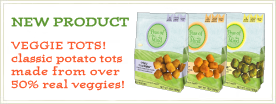BBBBRRRRRRR!!
The holidays are here, the days are dark and temperatures
have dropped. Some nights, we all need a little bite of something special
without a big mess or a lot of work. That’s where our mug brownie comes in - its
hot and fudgy with just the right festive peppermint flavor! Best of all, you
already have all of the ingredients in your kitchen and since everything gets
mixed in one mug, the cleanup is quicker than the New Years ball drop!
This recipe is gluten-free, grain-free, nut-free, and
low-fat, with an option to make it vegan and dairy-free as well. What more
could you ask for! You can certainly substitute different sweeteners, and
yogurt and applesauce work equally well, though we like the little protein kick
of the Greek yogurt. The texture is dense and chocolaty in the center with a
firmer cake-like exterior – best of both brownie worlds! So treat yourself –
without the guilt!
Ingredients:
2 tbsp crushed peppermint candy or candy canes
¼ tsp baking powder
¼ tsp peppermint extract
1 pinch of salt
1 tbsp maple syrup (or honey or agave nectar)
3 tbsp unsweetened cocoa powder (we love Guittard)
¼ cup fat-free Greek yogurt or applesauce
Process:
- Mix 1 tbsp of crushed peppermint and all other ingredients in a mug and blend with a spoon until uniform. Mixture will be quite thick.
- Microwave on power level 8 for 1minute and 20 seconds.
- Peek inside – depending on your microwave and desired “doneness” (we love the fudgy and almost mousse-like texture of 1 minute and 40 seconds) and continue to microwave in 20 second bursts until you’ve reach that level.
- Brownie will be very hot, so let it sit for a moment while you sprinkle the remaining 1 tbsp of crushed peppermint candy on top.
- Indulge!









